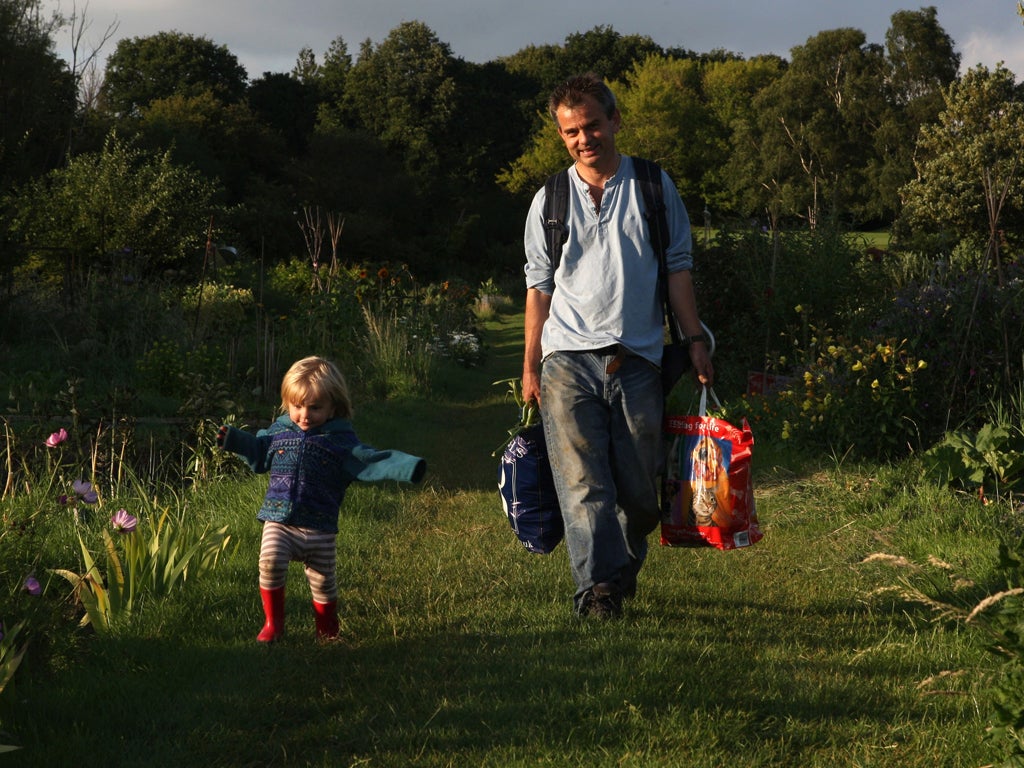Plant the seed and get children gardening
Urbanisation means fewer children have access to a garden, let alone a vegetable plot


At last, May is upon us: the month of sitting in the garden without wearing a coat, the Chelsea Flower Show and, with it, more Alan Titchmarsh on our televisions. It is also the time of year, it seems, when a survey is published showing how ignorant British children are about where their food comes from.
Only half of under-16s can tell the difference between a cucumber and a courgette – which is forgivable, given that both are green and cylindrical-shaped. But the survey, for the Children’s Food Trust, also found that just one in 10 youngsters could identify a leek.
For those children lucky enough to have a grow-your-own plot in their garden or allotment, or to have parents with fridges bursting with vegetables, a leek would be easy to spot. I assume the children of Wales make up a large proportion of the 10 per cent.
That 90 per cent are clueless betrays a wider problem. With increasing urbanisation, fewer children have access to a garden at all, let alone a vegetable plot. Our obsession with home improvements and extensions is shrinking outside space. The easy availability of ready-trimmed supermarket vegetables separates us from produce in its raw state.
The issue is not only with food, but an increasing disassociation with nature. My own child, brought up in London without a back garden (although we do have an allotment) is so cut off from the countryside that when we venture out of the capital, she shrieks with fear at a farmyard animal or hedgerow bird. The National Trust seems to be listening, because it is running an admirable campaign – 50 Things To Do Before You’re 11 3/4 – to get kids to drag out their parents to one of its properties for a country walk. Presumably the Trust believes that when the child turns 12 he or she will become allergic to fresh air and will only want to slump on the sofa.
This brings us to Alan Titchmarsh, who has blamed the lack of a new generation of professional gardeners on youngsters being more interested in BlackBerrys than raspberries, Apple Macs than apples, and cell phones than plant cells. Titchmarsh says that without horticulture, we would be “hungry, uninspired, artistically stunted, unhealthily house-bound, pale of skin and unsound in body. Our wildlife would be deprived of habitats. Birds would go hungry, bees would be short of nectar and frogs would fail to find sufficient places to spawn”.
I would wholeheartedly applaud Titchmarsh’s appeal, made at the Royal Horticultural Society to mark 100 years of Chelsea, if it were not for the fact that the RHS bans children under the age of five from attending the world-famous flower show. Those over five are charged the same price as adults – which is, for a non-member’s ticket, more than £60 a day. Chelsea is a very busy event, so I can understand how difficult it would be to take a young child around the show gardens, but why not have a dedicated children’s area? Running alongside the RHS event, but separate to it, is the Chelsea Fringe – a three-week festival of gardening focused on community gardening. All children are welcome, and most events are free. (I declare an interest as I have been involved in coordinating a couple of projects.)
The RHS does, however, run a campaign for school gardening, which has attracted more than 16,000 institutions since it launched six years ago. Nearly 6,000 have become “benchmarked”, meaning they have passed certain requirements on growing food and flowers, involving children, and the local community. The campaign works on several levels – it encourages learning, especially to those children not normally enthusiastic about sitting at a desk in double maths, it promotes healthy eating and exercise, and it propagates enthusiasm in children that they can then pass on to their parents. It has, perhaps, encouraged Michael Gove to ensure that gardening is included on the new national curriculum.
Yet one drawback is that most of the RHS schools that have achieved Level 4 and Level 5, the top two benchmarks, with well-established school gardens, are predominantly in affluent areas. Eligibility for free school meals, a good indicator of deprivation, is less than 10 per cent, well below the national average, in most of them. A few exceptions stand out, including Middleton St Mary’s primary school in south Leeds. Its children are from “challenging backgrounds”, with 38.9 per cent qualifying for free school meals. After an enthusiastic teaching assistant, Sarah Tarrant, enrolled pupils on the campaign, they now grow vegetables and herbs in the grounds, and, as well as achieving Level 5 from the RHS, won the national Green Schools Sustainability Project Award last year.
It matters that children know their onions from their garlic, and are not put off by the elitism associated with Chelsea or scared when a wild rabbit crosses their path. Interest in gardening and nature breeds learning, lowers levels of obesity, and reaps all the benefits of fresh air. And I’d hazard a guess that most of the Middleton St Mary’s children, some of the poorest in the country, can identify a leek.

Join our commenting forum
Join thought-provoking conversations, follow other Independent readers and see their replies